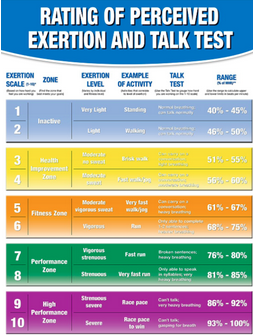“How far should I run?”
“How often?”
“How will I know that my training is too much?”
“Not enough?”
If you are a runner, chances are that you’ve thought about these questions when planning to train for a race or objective. While many programs exist online to guide us in mileage selection for success in these endeavors, they often do not account for workload. Many devices exist today to monitor our heart rate and mileage, which help us put numbers to our progress. Importantly, however, these metrics don’t assess our effort level or physical response to runs. And we all know that running 6 miles of the same road can feel very different from day-to-day.
A useful tool to help quantify workload in this regard is called the “acute-to-chronic workload ratio,” or ACWR. In this model:
- Acute Workload (AW) = the total workload performed in 1-week of workouts.
- Chronic Workload (CW) = the average weekly workload performed in the last 4-weeks (including the most recent week, or the AW).
- Daily Workload (DW) = session-rating perceived exertion (sRPE) multiplied by the duration of the workout. The sRPE scale is included in the picture below and allows you to select the approximate difficulty for the workout you performed. It is scaled from 1-10.
 See the following example, for how this might work:
See the following example, for how this might work:
- Day One: 60min x sRPE 5 = 300
- Day Two: 45min x sRPE 7 = 315
- Day Three: 70min x sRPE 4 = 280
- Day Four: Rest
- Day Five: 120min x sRPE 4 = 480
- Day Six: 45min x sRPE 7 = 315
- Day Seven: 60 min x sRPE 4 = 240
- Acute Workload = 300 + 315 + 280 + 480 + 315 + 240 = 1930
The chronic workload would be four successive weeks, including the most recent:
- Week 1 = 1740
- Week 2 = 1830
- Week 3 = 2120
- Week 4 = 1930
- Cumulative Workload = 1740 + 1830 + 2120 + 1930 = 7620
- Chronic Workload = 7620 / 4 = 1905
From these values, you can calculate you ACWR:
- ACWR = 1930 / 1905 = 1.01
The ACWR value can now be used to assess how your most recent week compares to your chronic load. Several parameters have been suggested for ACWR interpretation:
- < 0.80 = undertraining, with a higher relative injury risk
- 0.80 – 1.30 = optimal workload, with lowest relative injury risk
- > 1.50 = overtraining, with highest relative injury risk
These values are easily documented in an Excel spreadsheet or an exercise log and can help you to assess if you have been training appropriately, and how to style your next weeks of training. As a rule, a weekly increase of 10% in miles is considered to be a good goal. However, also keep your workload in mind, which can change with your sRPE in every workout. Many injuries occur in running due to making a training error regarding the ACWR, so it is a good metric to track when planning your next schedule. Happy training, and I hope to see you on the trails!
-Peter Mason, PT, DPT